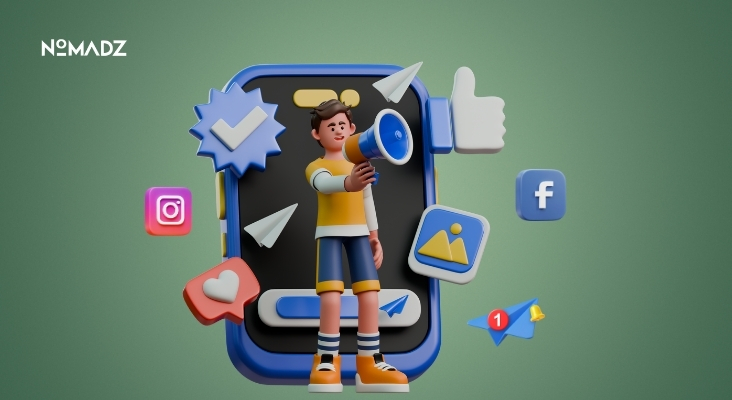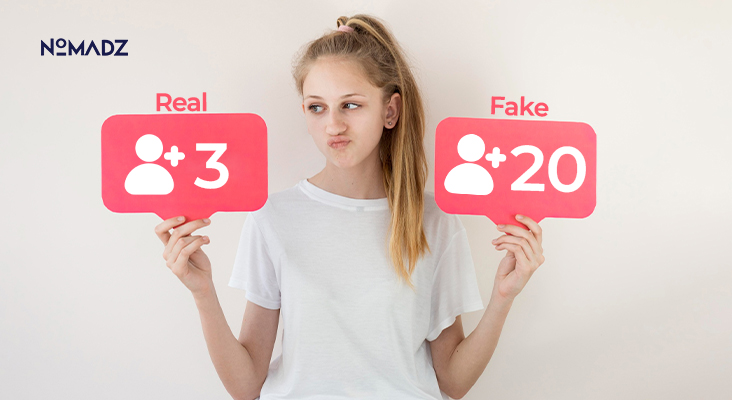Why Influencer Marketing Still Matters in 2026?
The field of influencer marketing has kept changing with each trend, each change in the algorithm, and the emergence of a new platform. However, in 2026, it will be among the most effective means of brands reaching people in a real-life manner. People do not want AI-generated content, automation, and high-tech ad tech; nevertheless, they trust people, and this is why influencer marketing is flourishing.
The Human Touch Still Wins
Despite the advent of AI and state-of-the-art campaign instruments, consumers desire to watch real stories, experience real things, and get real validation. The influencer marketing exploits this human element by identifying with the creator who is relatable and credible. An influencer will speak about a product with sincerity, and it will go a long way better than any pre-written advertisement ever does.
In the modern world, all large platforms, Instagram, TikTok, YouTube, Pinterest, and even AI-driven virtual environments are still on the frontline, encouraging creators. Influencer marketing is effective due to the fact that users are more inclined to follow the suggestions of people whom they look up to or whom they identify with.
Also Read: Women’s Cricket is Shaping the Future of Sports Influencer Marketing
Why Influencer Marketing Remains a Core Strategy
Check out the reasons why influencer collaborations will remain robust in 2026:
- Audits have more trust in the creator rather than the brand.
- Some communities are highly targeted by niche influencers.
- Compared to conventional ads, branded content seems more real.
- Strong engagement is achieved through creator partnerships.
- Creator-led formats are prioritized by social platforms.
The relatability and improved storytelling, which continue to dominate consumer decision-making, are elevated among brands that invest in influencer marketing.
Niche Influencers Are More Powerful Than Ever
Niche influencers are taking the initiative in 2026. Rather than innovating after chasing mega influencers, brands have started to appreciate creators who have close-knit and enthusiastic audiences. Such creators can be micro-experts in the field of beauty, sustainable lifestyle experts, fitness analysts, tech analysts, or bloggers of local foods. They have a high impact as:
- There is more credence in their suggestions.
- They interact with fans frequently.
- Their societies are similar in their interests.
- The increase in participation is more natural.
With the shift to relevance and not reach, niche influencers keep the brands in mind of the right people.
Branded Content That Doesn’t Feel Like Advertising
People in the present-day world are able to tell the forced or over-promotional work immediately. Content that is genuinely branded by creators seems like one of their daily storytelling. That is why influencer marketing becomes integrated into the feeds of the users without being obtrusive.
The most successful branded content will appear in the year 2026 as:
- Tutorials
- Day-in-the-life clips
- Product comparisons
- Real-time reviews
- Behind-the-scenes stories
Influencer marketing draws a natural creator moment by immersing the products into the buyer behavior in a natural manner.
Creator Partnerships Are Now Long-Term
There are still short-term collaborations, but long-term collaborations between creators are the new norm. Brands would rather develop long-term relationships with influencers due to:
- Messaging stays consistent.
- Brand exposure is repeated by the audience.
- Brand values are well comprehended by creators.
- With time, performance increases.
This paradigm changes influencer marketing from a single-event campaign to a longer-term story of a brand.
The Growing Need for Social Proof
Social proof has never been as relevant as it is in 2026. Consumers rely on influencer validation since they have a plethora of options on the internet. People seek to know before purchasing:
- Creator reviews
- Real-life demonstrations
- Tutorials
- Honest feedback
- Community reactions
By highlighting social proof at each phase of the purchasing process, influencer marketing reinforces social proof through the choice to purchase all the way to the purchase process.
Measuring Success with Modern Tools
The maturity of influencer marketing brought with it the maturity of the measurement systems. Advanced tools are now used to follow results precisely by the brands. This includes:
- Performance dashboards
- KPI tracking
- Real-time reporting
These characteristics assist the marketers to know what content works, which influencers perform the best results, and how the audiences behave. Through transparent data, influencer marketing is predictable and scalable.
Also Read: Fake Followers vs. Real Impact: The Future of Influencer Marketing
Pointers: Why Influencer Marketing Still Matters
- People trust creators more than ads
- Branded content blends naturally into social feeds
- Niche influencers build deeper engagement
- Social proof heavily influences purchases
- Long-term creator partnerships strengthen brand identity
- Real-time reporting ensures measurable success
- Influencer marketing fuels both visibility and credibility
Final Thoughts
By 2026, influencer marketing will remain an important component of the current brand strategy. It succeeds since it exploits something that cannot be emulated by algorithms: genuine human interaction.
Influencer marketing is more effective and efficient than ever with the emergence of niche influencers, genuine branded content, effective collaborations with creators, and effective measurement tools. The brands that are investing in creators now will remain relevant, relatable, and trustworthy in the future.









Leave feedback about this